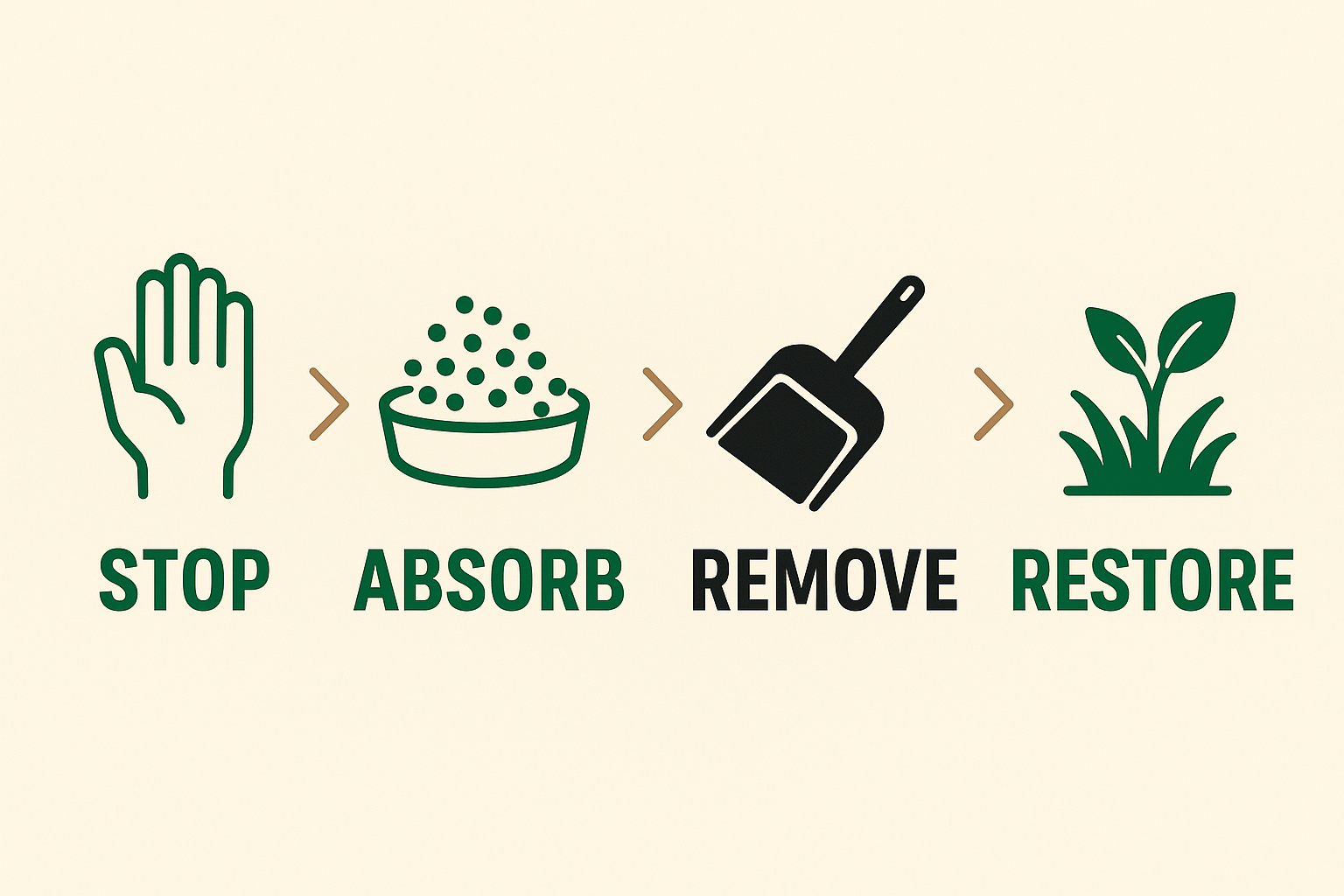.png)
Short answer: no—antifreeze isn’t safe for your lawn. Most automotive antifreeze (ethylene glycol) is toxic to grass, soil life, pets, and wildlife, even in small amounts. If you spill it, act fast: contain, absorb, and dispose properly. There are safer options for winterizing plumbing, but none belong on turf. We’ll show what to use instead and how to handle leaks.

Spill on the lawn? Don’t panic, but do move quickly. Here’s the play-by-play homeowners ask for all the time.
Pro tip: Avoid water at first. Hosing spreads contamination and can push antifreeze into storm drains.
This is where the labels get tricky. A quick rundown you can trust:
Rule of thumb: If it prevents freezing, it doesn’t belong on your lawn.
Antifreeze is sneaky. It doesn’t always scorch turf right away, but it’s rough on the underground world your lawn relies on.
A homeowner told us they noticed a random yellow patch by the driveway after a tiny leak from a coolant hose. By the time the dog kept sniffing it, the spot had already spread. Fast cleanup would’ve saved them a weekend of patch-and-repair.
Let’s ditch the worry and do it right. Smart, simple, lawn-safe approaches:
Irrigation systems
Outdoor faucets and hose bibs
Vehicles and small engines
Storage and safety
Here’s a simple, safer method that respects your grass and the watershed.
Step-by-step cleanup
Often, yes. Small spills respond well to compost and reseeding. If the patch doesn’t green up within 2–4 weeks (during growing season), remove another inch of soil, add fresh topsoil, and seed again. For winter spills, stabilize the area and reseed in spring.
Is antifreeze safe for my lawn if it’s just a few drops?
Not really. Tiny amounts are less damaging, but still unsafe for pets and soil life. Clean it up.
What if it rains right after a spill?
Assume it spread. Keep pets away, watch for runoff, and treat the area as contaminated.
Is propylene glycol (RV antifreeze) totally safe?
Safer, not harmless. Keep it out of soil, drains, and waterways.
Can I dilute antifreeze on the lawn with water?
No. Dilution spreads contamination. Absorb and remove first.
Will grass grow back after antifreeze?
Usually, with cleanup plus compost and reseeding. Persistent bare spots may need soil replacement.
Antifreeze and lawns don’t mix—period. If a spill happens, act fast, avoid water at first, and dispose of waste correctly. Choose smarter winterizing methods like blow-outs for irrigation and insulated faucet covers. And hey, if you want a plan that’s easy and worry-free, Turfrain can help you winterize the right way. Contact Us—we’ll treat your yard like it’s ours.